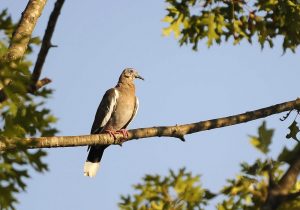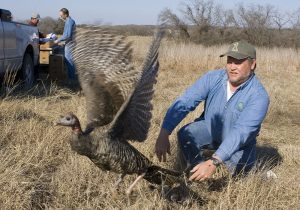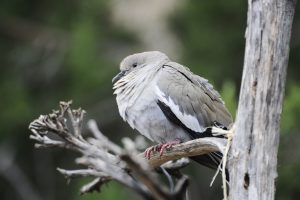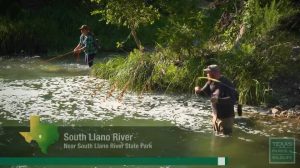“Citified” White-winged Doves
Monday, September 24th, 2018This is Passport to Texas
White-winged doves, originally associated with the Lower Rio Grande Valley, have expanded their range. Changes in land use practices sent the species farther north into urban areas. Suitable habitat kept them there.
Probably 80-85% of the white-wing dove population in Texas is associated with urban and suburban areas.
Nesting white-winged doves prefer established residential neighborhoods with large live oak, pecan, and ash trees. The availability of consistent food and water sources (birdbaths and bird feeders) make the living easy. Owen Fitzsimmons, Texas Parks and Wildlife’s web-less migratory game bird leader says Texas Parks and Wildlife staff conducts yearly urban dove surveys. He encourages citizens to share their observations of the species, too.
That being said, there are a number of citizen science information collection methods—things like eBird. That’s something that is not run by states or by fish and wildlife service, but it’s something I guarantee, that everybody looks at. It’s a very valuable information source. So, while we don’t have citizens of Texas doing the urban dove survey, I encourage them to report whatever they find on eBird. You know, because, that information is looked at as well.
The Wildlife Restoration program supports our series and funds research on White-winged Dove Density, Distribution, and Harvest.
For Texas Parks and Wildlife…I’m Cecilia Nasti.







 Passport to Texas is a
Passport to Texas is a  Passport to Texas is made available by:
Passport to Texas is made available by: